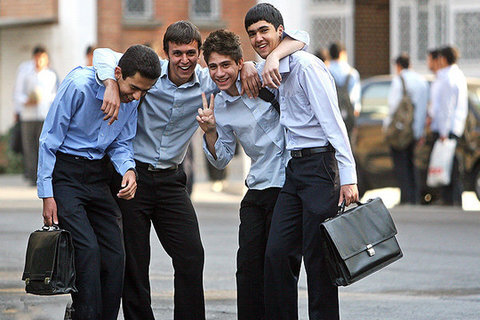Education Ministry adopts measures for "family and youth support"

TEHRAN – The Ministry of Education has taken steps in line with implementing the "Law on Family and Youth Support", said Zahra Panahi-Rava, an advisor to the ministry for women and family affairs.
By a decree issued by President Ebrahim Raisi, the "Law on Family and Youth Support" approved by the Majlis (Iranian Parliament) was notified to the Ministry of Health and the Vice Presidency for Women and Family Affairs.
The Guardian Council approved the law on November 17 last year to implement a population growth and family support plan for 7 years to change the declining trend of childbearing.
The plan stipulates offering health insurance for infertile couples and providing working women and their children with food packages. The plan stipulates health insurance for infertile couples, providing services and facilities to working women, providing health and nutrition support packages to mothers and children, educational opportunities for student mothers, providing livelihood support to families, and ongoing medical services to pregnant women.
Various tasks have been assigned to the executive bodies in this law, and in addition to some articles that have a general aspect, Articles 33 and 34 are specific to the Ministry of Education, Panahi-Rava noted.
“We have planned programs in various fields from health and physical education to education and literacy,” she said, expressing hope to take the first steps this year.
According to Article 33 of this law, the Ministry of Education is obliged to take measures in cooperation with the Islamic Propagation Organization and within the framework of the approvals of the Supreme Council of the Cultural Revolution, to implement the Fundamental Reform Document of Education.
Training and education of skills related to the Islamic-Iranian lifestyle, personal and social personality development, individual skills, promoting the culture of marriage, family, childbearing, and responsibility for family formation and excellence are among these measures, she explained.
Article 34 also states that the ministries of education and science are obliged to create, expand and strengthen fields of study in all universities in the country in accordance with the status and role of family and women based on the Islamic-Iranian culture, such as home and family management.
Demographic issue
Today, the country's fertility rate has reached about 1.6 children per woman, however, it was 6.5 children per woman, in 1986. The lowest fertility rate in the whole region of West Asia, North Africa, and the MENA region is recorded for Iran.
While 1,594,000 births were registered in the [Iranian calendar] year 1394 (March 2015-March 2016), the downward trend continued annually to the point that the number of births reached about one million in the [Iranian calendar] year 1399 (March 2020-March 2021).
In other words, the country lost more than 550,000 births in five years.
The fertility rate declined to 1.71 children in the [Iranian calendar] year 1399 (March 2020-March 2021), reaching below the replacement level, according to the report released by the Statistical Center of Iran.
Replacement level is the amount of fertility needed to keep the population the same from generation to generation. It refers to the total fertility rate that will result in a stable population without it increasing or decreasing.
Nicholas Eberstadt, the Henry Wendt Chair in Political Economy at the American Enterprise Institute (AEI), wrote in an article in July 2020 that the fertility rate in Iran has dropped by 70 percent over the past 30 years, which has been the highest decline in human history.
Seyed Hamed Barakati, the former deputy health minister for the family and school population, said in May 2021 that Iran’s population growth rate has decreased to less than one percent for the first time over the past four decades.
FB/MG
